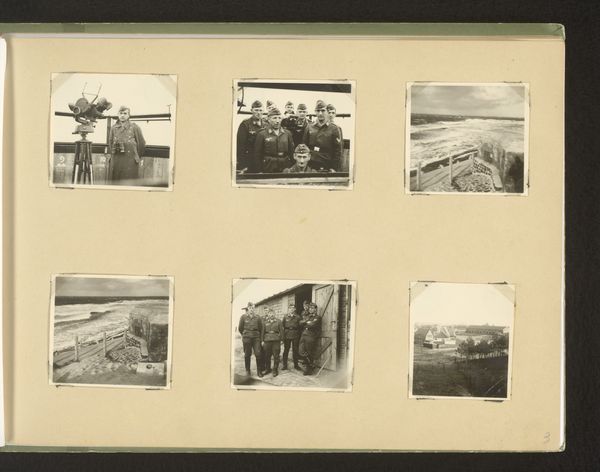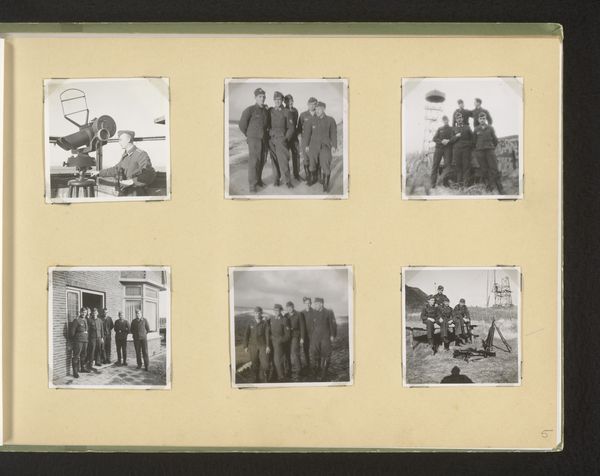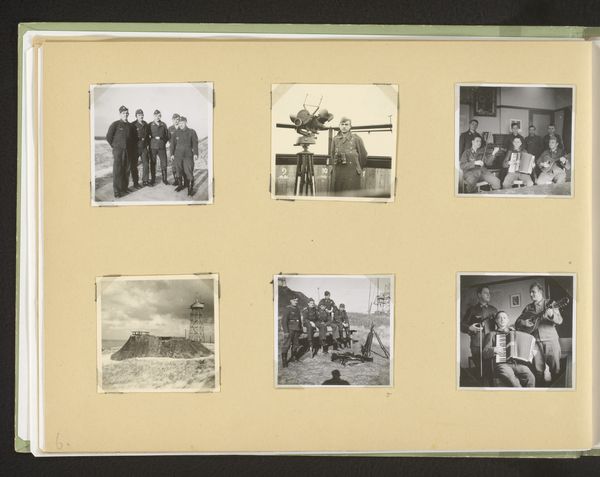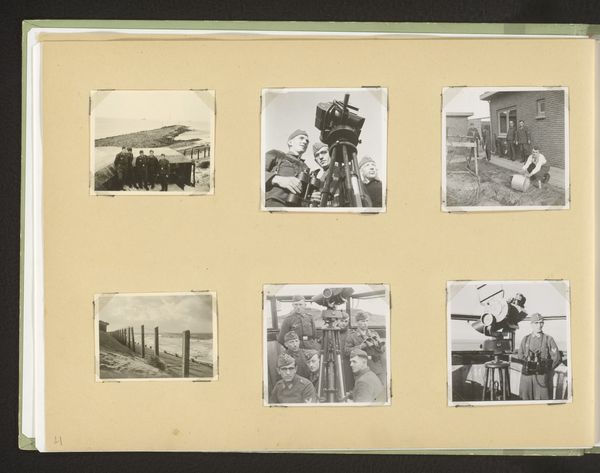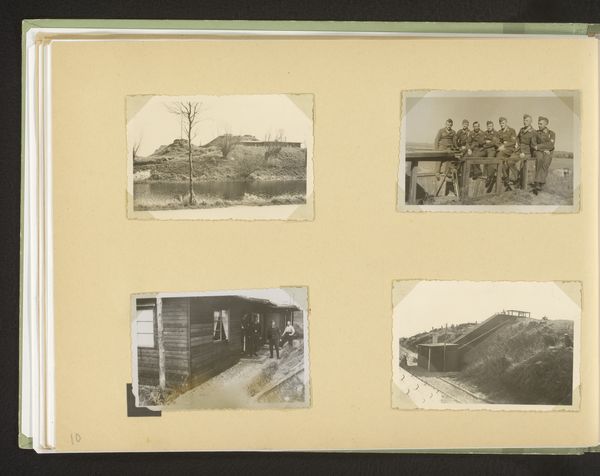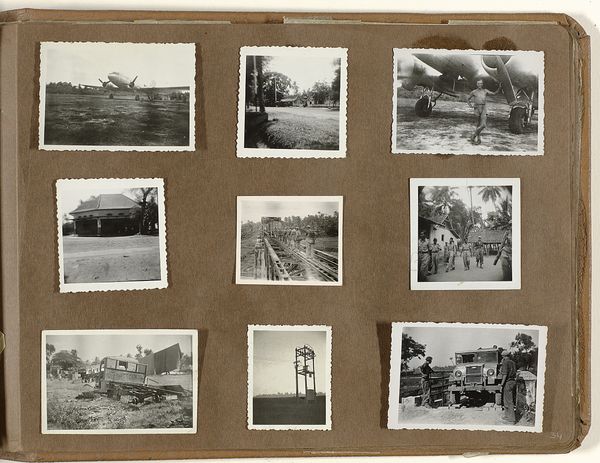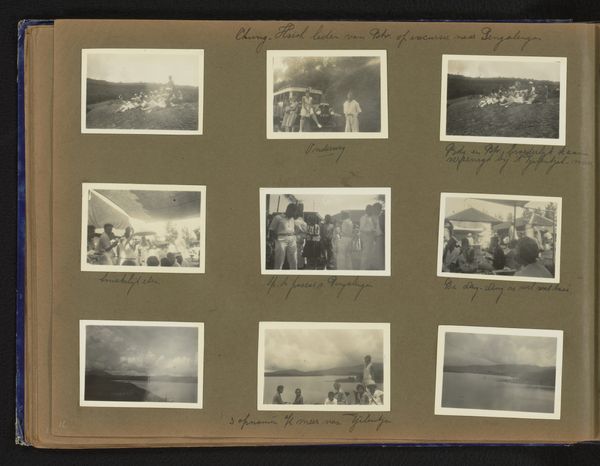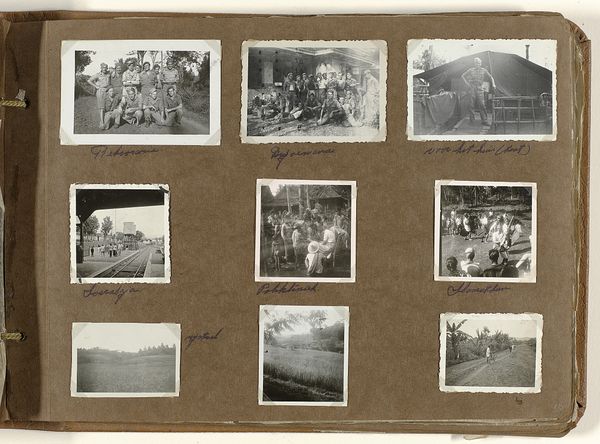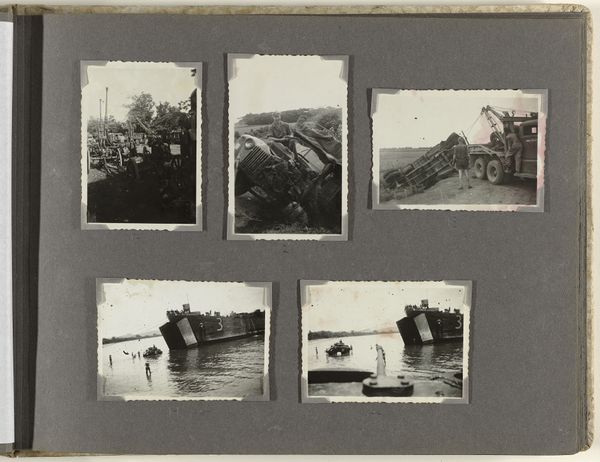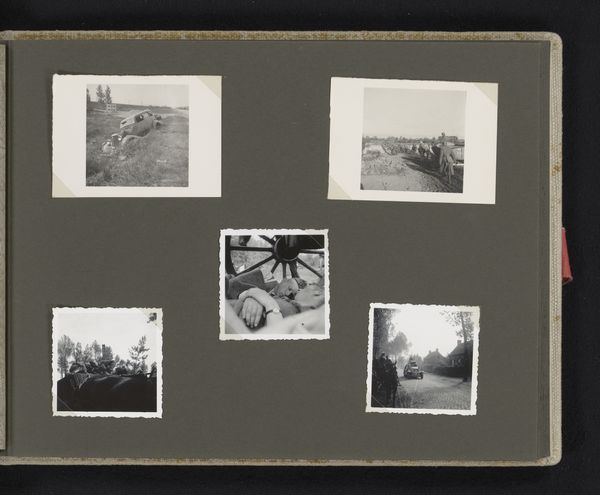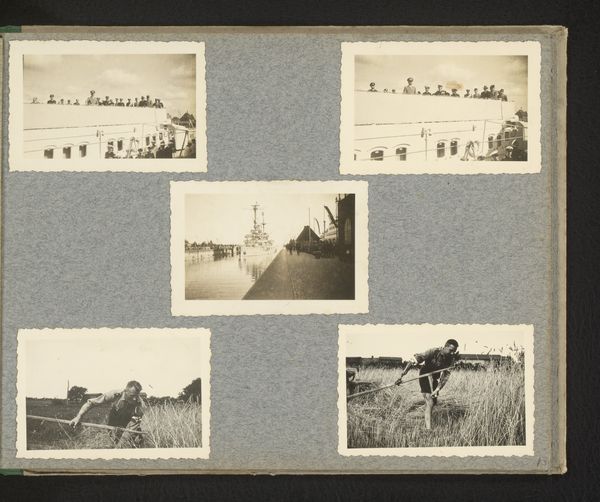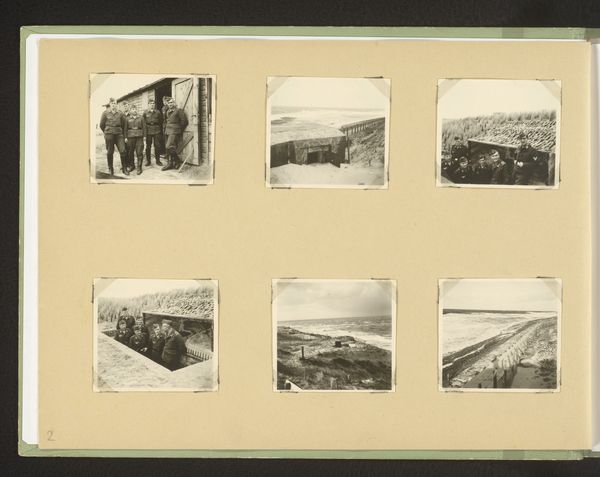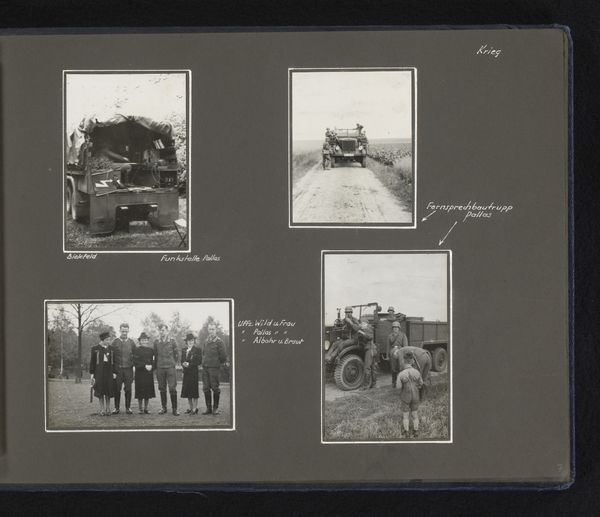
photography, gelatin-silver-print
#
portrait
#
ink paper printed
#
war
#
photography
#
gelatin-silver-print
#
history-painting
#
watercolor
Dimensions: height 55 mm, width 60 mm, height 195 mm, width 292 mm
Copyright: Rijks Museum: Open Domain
Editor: This is a photograph, a gelatin-silver print titled "German Soldiers at a Bunker on the North Sea Coast," dating from between 1940 and 1944. It’s part of the Rijksmuseum collection. The overall mood feels unsettling, documenting military presence during wartime. What strikes you most about this collection of images? Curator: The unsettling feeling you describe speaks directly to the photograph’s power as a historical document. We see not just images of military personnel, but a visual manifestation of occupation. Consider the context: the Netherlands under Nazi rule. How does the photograph function as a form of propaganda, even unintentionally? It simultaneously portrays power and exposes the inherent violence embedded in that power dynamic. What assumptions can we make about the photographer’s access and perspective, given the context of Nazi occupation? Editor: I hadn't considered the propaganda aspect. I guess seeing the soldiers so formally, almost like staged portraits, normalizes their presence, maybe even trying to project an image of order and control? Curator: Precisely. Think about who the intended audience might have been. Were these images for internal consumption, to bolster morale, or were they meant to project an image of strength to the outside world, quelling resistance through implied force? How might the reality of daily life under occupation contrast with these carefully curated photographs, and how do we reconcile that dissonance? Editor: It’s disturbing to think about the constructed reality versus the lived experience of the Dutch people at that time. I learned so much, it makes me think of these images in a new and darker light. Curator: Reflecting on that dissonance, and interrogating the intentions behind seemingly neutral images, is crucial to understanding the complexities of history and representation. Photography isn't merely a reflection of reality; it's a powerful tool that shapes our understanding of it, particularly in times of conflict and oppression.
Comments
No comments
Be the first to comment and join the conversation on the ultimate creative platform.
